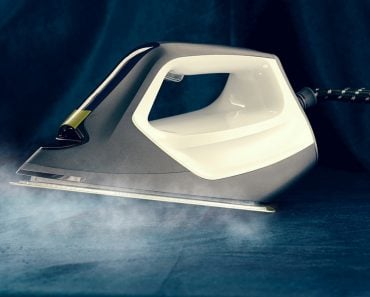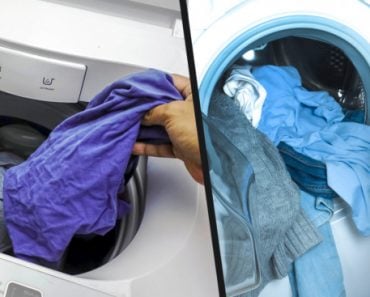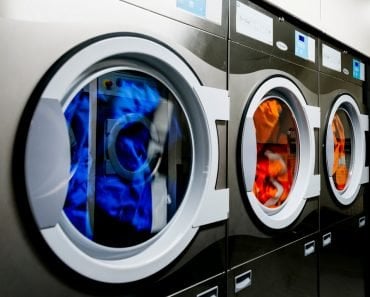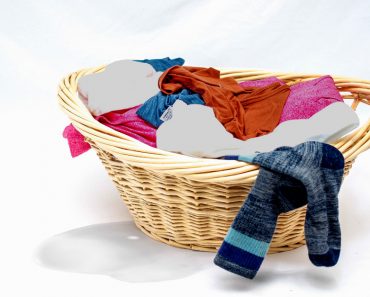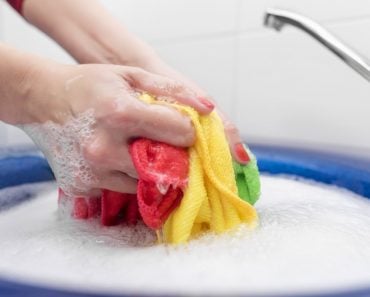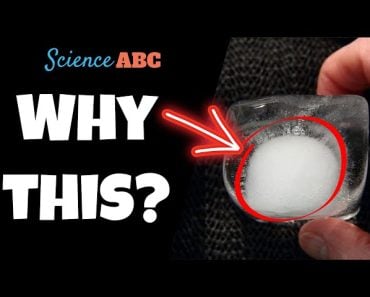Table of Contents (click to expand)
Machine-dried towels are less absorbent than air-dried towels if you are using a traditional fabric softener. The bottom line is, whether you tumble dry or line dry your towels, there could be absorbency issues if you use a traditional fabric softener.
For those of you who take your laundry activities very seriously, and pay attention to the quality of your fabrics, the debate between air-drying and machine-drying is a constant battle. While the pros and cons of these two drying approaches is discussed at length here this article is specifically related to the absorbency of the towel after it has been dried.
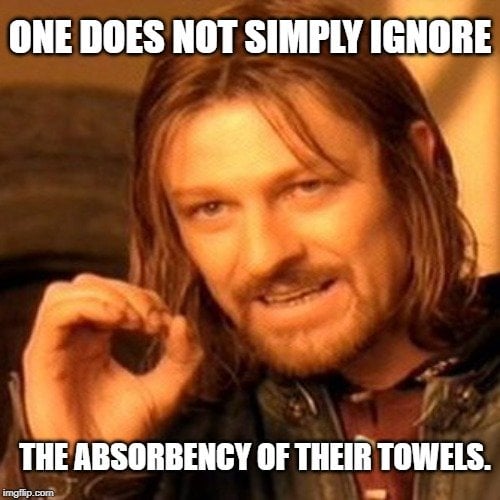 Most people won’t notice the difference, but those keen sticklers will always know if their towel has been line- or tumble-dried. The mystery to this, of course, is that if both approaches dry out the fabric by removing water molecules, why would machine-dried towels be less absorbent after future showers than those towels hung on a line out in the yard?
Most people won’t notice the difference, but those keen sticklers will always know if their towel has been line- or tumble-dried. The mystery to this, of course, is that if both approaches dry out the fabric by removing water molecules, why would machine-dried towels be less absorbent after future showers than those towels hung on a line out in the yard?
Recommended Video for you:
Machine-Dried Vs. Line-Dried Towels
When you wash a load of clothes, you typically do so with laundry detergent or bleach, which is then rinsed off, leaving your clothes soft and clean, ready to be brought back out into the world. However, there is another addition that many people like to include in their laundry loads—fabric softener. This is especially popular if people are going to air-dry or line-dry their clothes, since the fabric softener will prevent the stiffness and clumping that often occurs when clothes dry on the line.
If you add that liquid fabric softener to your laundry load, as so many people do, some residue of that substance will remain on the fibers of the towel after it is done being washed. Remember, the addition of fabric softener is usually seen as a “post-laundry” addition; in automatic machines, the softener may not be added until the rinse cycle. Therefore, when you hang it on the line, that thin layer of the substance will often remain on the towels, where it will help prevent clumping and hard patches, which can make the drying experience unpleasant.
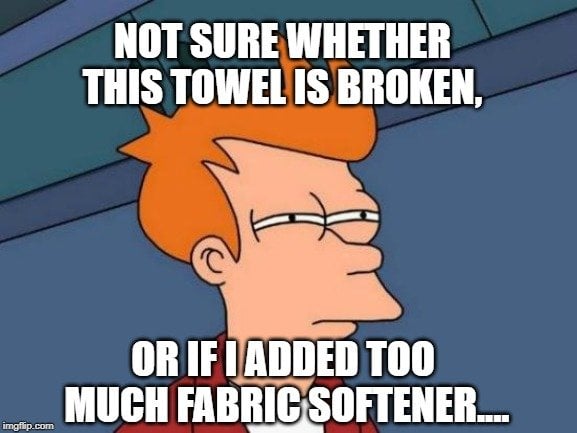 However, therein lies the “rub”. While that fabric softener makes the towels feel better against the skin, that residue also reduces the absorbency of the towels. Essentially, it blocks the fiber molecules from weakly bonding with the water molecules, which is why it might not feel like the towel is doing much to help you dry off! The friction and heat of a regular dryer, as opposed to air-drying your clothes, will make this absorbency issue less noticeable; furthermore, since fabric softener isn’t as commonly added to laundry loads that will be machine-dried, the problem doesn’t arise as often.
However, therein lies the “rub”. While that fabric softener makes the towels feel better against the skin, that residue also reduces the absorbency of the towels. Essentially, it blocks the fiber molecules from weakly bonding with the water molecules, which is why it might not feel like the towel is doing much to help you dry off! The friction and heat of a regular dryer, as opposed to air-drying your clothes, will make this absorbency issue less noticeable; furthermore, since fabric softener isn’t as commonly added to laundry loads that will be machine-dried, the problem doesn’t arise as often.
Dryer sheets are an easy solution that can keep clothes soft and static-free, which is another reason why people often go with the convenience of tumble-drying their clothes.
A Solution To The Problem?
There are some other approaches to keeping clothes soft without the addition of fabric softener, even if you’re planning on hanging them out on the line. Perhaps the most well-known DIY approach is simply adding some white vinegar to your rinse cycle, if you are also using fabric softener. The chemical interaction of vinegar with the fabric softener will weaken its bonds and help it be flushed out of the clothes during the final spin cycle. A half-cup per load should be more than enough to have the desired effect.
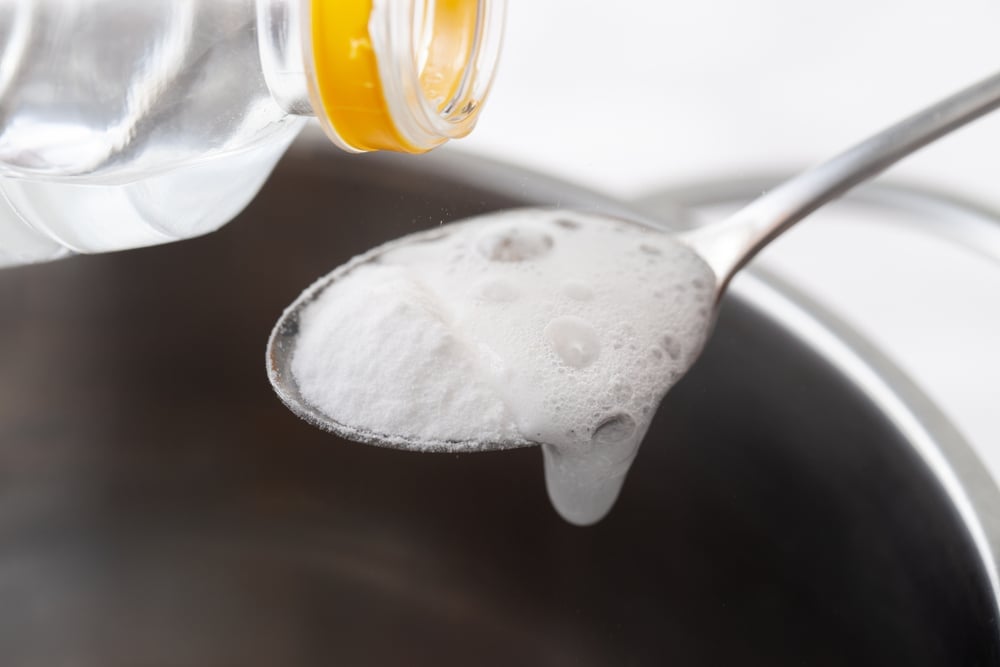
Dryer “balls” are also growing in popularity in recent years. Crumpling up a ball of aluminum foil and tossing it into the dryer can reduce static, but not necessarily boost softness. More “high-tech” dryer balls with varying textures can help the clothes from clumping so they will dry more effectively. The ideal solution to this problem, of course, is to simply eliminate fabric softener use of any kind, which will leave your towels equally absorbent, regardless of how you choose to dry them.
The bottom line is, whether you tumble dry or line dry your towels, there could be absorbency issues if you use a traditional fabric softener. If you want your towels—as well as athletic wear and other microfiber materials—to come out soft and fully functional, you may need to use some of the tips, tricks and advice you learned in this article!



